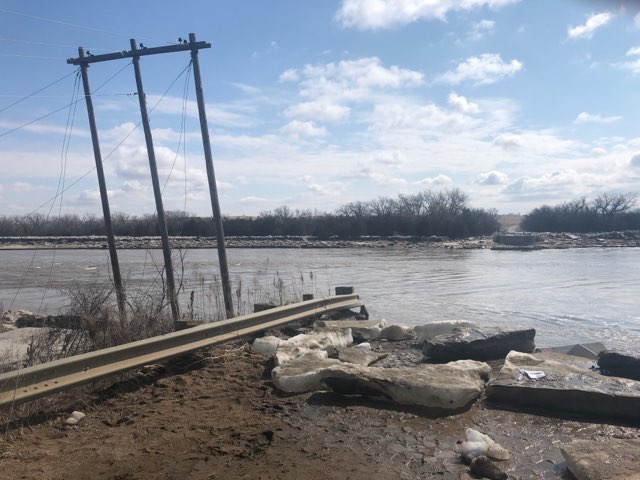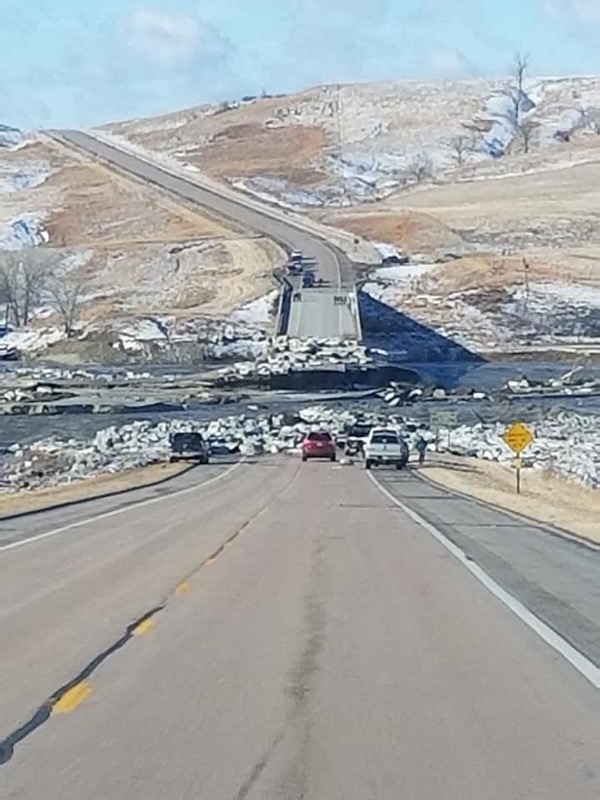
Officials from electric cooperatives and public power districts in Nebraska say it could take months to clean up and repair the damage to homes, farms and ranches from recent floods—and years for those hit hardest to recover.
“There’s been extensive damage to roads and bridges, and that will have a tremendous impact on how soon our co-ops and PPDs will be able to see just how extensive the damage is,” said Kim Christiansen, general manager of the Nebraska Rural Electric Association. “Some areas are going to have to dry out before we are physically able to get there and check out our infrastructure.”
State officials are already estimating damage at more than $1.5 billion. The total is expected to climb as agricultural, industrial and commercial losses are tabulated.
“Our member utilities may see their numbers increase and many of our farmers and ranchers have suffered losses of both livestock and topsoil washed away by flooding,” said Christiansen. “Those impacts will be felt for years, so those will be long-term problems.”
Assessing damage and making permanent repairs remains challenging even as floodwaters continue to recede in some areas.
“A dam on the Niobrara River was taken out by flooding along with three bridges downstream,” said Joe Janousek, director of member services for Niobrara Valley Electric Membership Corp. “It took out our feeds across the river, so three substations and every meter north of the river was without power.”
O’Neill-based Niobrara Valley EMC estimated the flood took out 800 to 1,000 meters. Restoration of service to all members who could safely receive power was completed by March 19.
“We’re currently driving about 125 miles or more to reach locations that would normally be 18 to 20 miles away, said Janousek. “The nearest bridge is about 45 to 50 miles west of us, and then we have to head east to reach northern portions of our three-county service territory.”
Some heavily flooded communities remain disconnected at the request of public safety personnel who are still involved in search, rescue and damage operations.
“We have three community lakes surrounded by cabins, and authorities asked that power be disconnected,” said Wade Rahn, customer and technical services coordinator for Butler Public Power District.
“Two communities have been restored, but we have also heard from more than 70 customers who cannot get to their properties to see the damage, and they have asked that we leave the power disconnected,” said Rahn. “About 95 percent of our 6,500 meters now use automated metering infrastructure, so we’ve been able to disconnect them remotely, if requested.”
David City-based Butler PPD has contracted a drone operator to begin pole inspections in still-flooded rights of way, said Rahn. “We have at least 30 poles that have been heavily damaged or knocked down as a result of the flooding.”
Gov. Pete Ricketts requested expedited consideration of a federal disaster declaration, and Vice President Mike Pence was in Nebraska to inspect flood damage on March 19.
The statewide association is already working with the Nebraska Emergency Management Agency to help member utilities assemble the documentation for Federal Emergency Management Agency reimbursement applications.
“Dealing with FEMA can be a lengthy and involved process,” Christiansen said. “It takes a while to tabulate all of the damage and get covered projects completed, before you can get reimbursed.”
Derrill Holly is a staff writer at NRECA.
